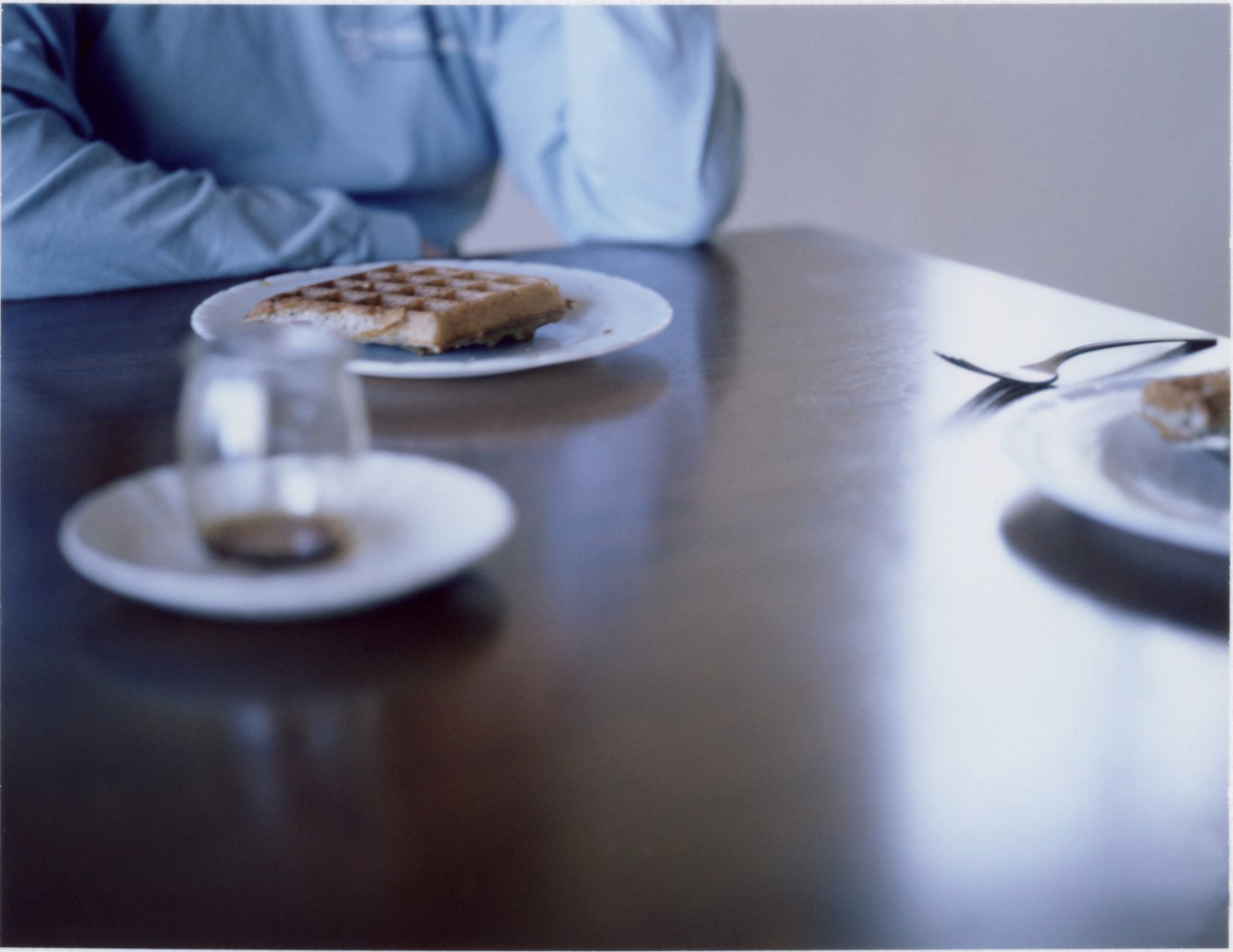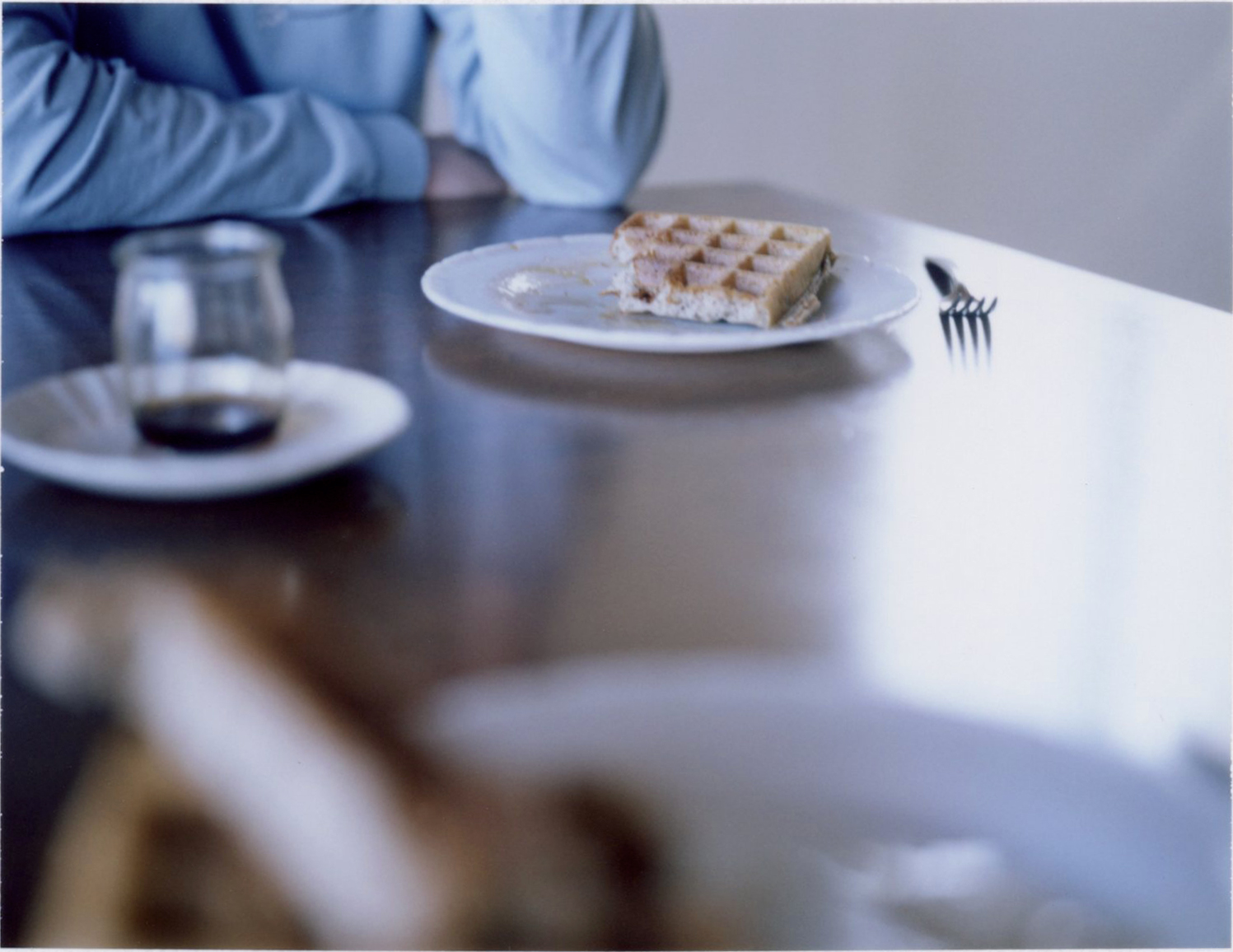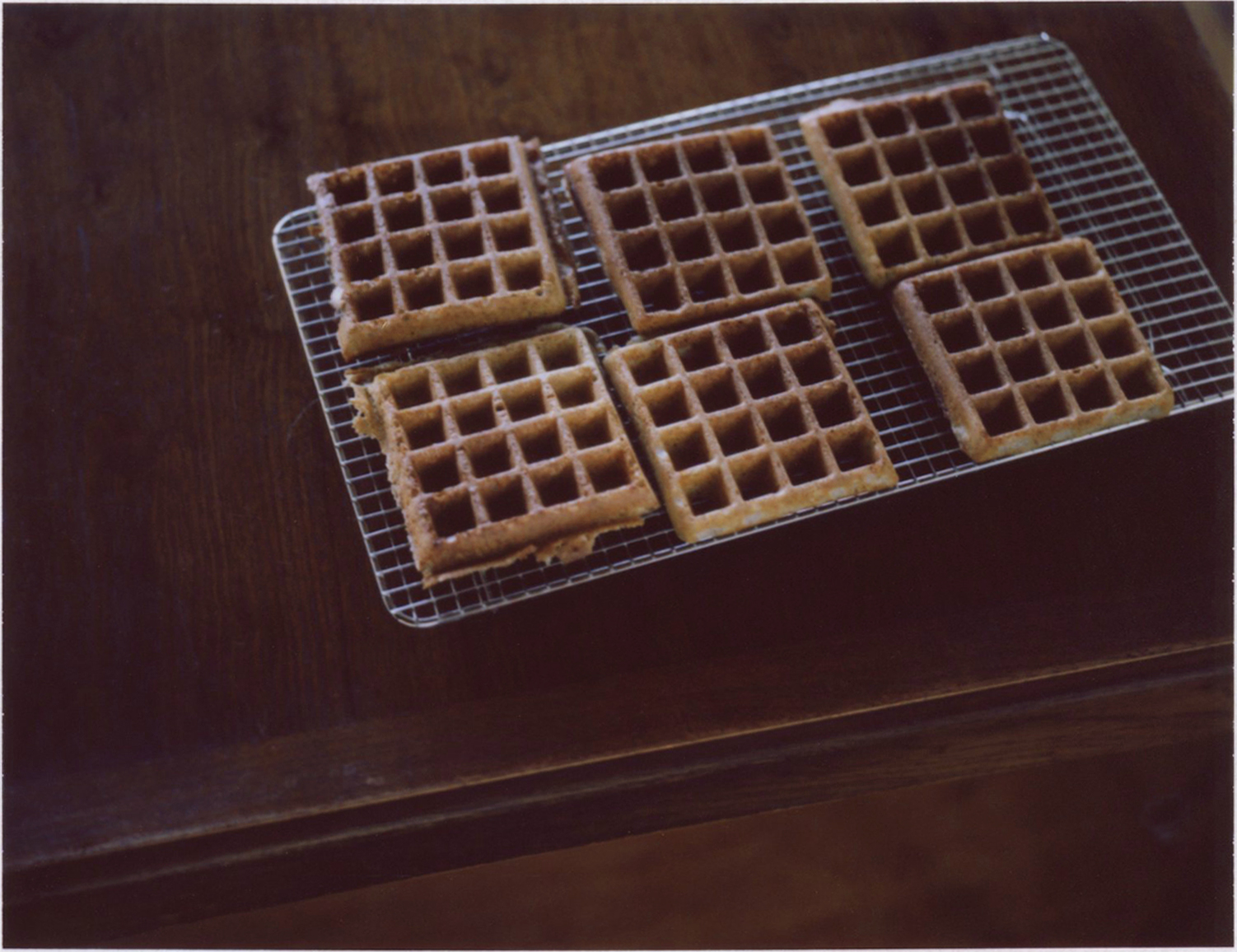This is important
You people. YOU PEOPLE.
I’m still blinking in disbelief at the kindness you’ve shared with me and Brandon and Tiny Person Under My Shirt. I hate secrets, and this secret, no matter how well intentioned, surprised me with how heavy it felt, how unwieldy it was to carry around. It’s been a relief to to share it with you, and an unexpected thrill to have it met with such encouragement and excitement. I should have gotten pregnant a long time ago, just for the morale boost! Thank you for that.
In return, I give you a waffle.
Initially, I planned to give you some orange buns, and then I planned to give you these seeded breadsticks that my mom used to make, and then I considered a rye cake with muscovado sugar and apples. But I’ve been having what I think you could safely call a month of totally mediocre cooking. Totally mediocre baking, I mean. (Totally mediocre ability to complete a thought, also.) Actually, I was starting to think that there must be some old wives’ tale about pregnant women baking with yeast, something akin to the one that says that menstruating women can’t make mayonnaise. (Note: despite the contents of the previous sentence, this is not going to turn into a blog about the female reproductive system. I don’t always know what this blog is about, but I feel confident ruling that out.) Then, this past Monday, I made a batch of yeasted buckwheat waffles, and boom, the streak was broken. Marion Cunningham is, now and forever, the solution to every problem.
Marion Cunningham’s yeasted waffle recipe is a tried-and-true for me, and I first wrote about it, in exuberant terms, close to two years ago. Her waffle is perfect. It’s crisp and crunchy on the outside, but inside, the crumb is tender, speckled with tiny air holes, and slightly, pleasingly damp (if I can use that word without causing you to think instantly of basements and mildew and the pair of jeans that you took out of the dryer and put on while they were still warm and only realized weren’t actually dry once you had your shoes on.) There’s a decent amount of butter in the batter, and between that and the yeast, you wind up with a lot of flavor – rich and lightly sweet, but also deep somehow, a little interesting. I knew all of that couple of years ago, but what I didn’t know until recently is how adaptable these waffles are, how readily they would welcome other flours and flavors.
I have a sweet tooth, and it’s only gotten larger in the past couple of months. I have alternately addressed this problem with Graeter’s ice cream – now available in Seattle! At Fred Meyer! And some QFCs, I hear! – Cadbury Mini Eggs, a few donuts, and, in moments of restraint and sanity, a teacup of plain yogurt with jam or honey stirred in. In the interest of exercising some degree of control over how much sugar and other ridiculous nonsense I ingest, I’ve been increasingly trying to make my sweets at home, and to make them with a variety of flours, not just the usual white. I’ve been doing my favorite banana bread (the one in my first book) with a third or half whole wheat flour, which gives a nice, nutty flavor, and I’ve been playing around with pancakes and waffles, too. None of it is rocket science or wheel-reinventing; it’s the kind of tinkering that I think we all do sometimes, to feel better about the way we eat. But when I made a buckwheat version of Marion Cunningham’s classic overnight yeasted waffle, I knew I had to tell you about it.
I have long believed that buckwheat plus maple syrup is a union that cannot be improved upon, but I am now prepared to go on record as saying that buckwheat plus maple syrup plus yeast plus a waffle iron is even better. The outside of a yeasted buckwheat waffle, where it crisps against the iron, gets toasty and almost caramelized. It’s a little savory, and when the maple syrup comes along, it feels especially welcome, especially right. You could put the maple syrup on top of the waffle, the usual way, but I like to put it in a puddle on the side of the plate instead, and then pick up the waffle with my hand – this is very important – and drag it and sort of smash it through the syrup, and then take a bite, and then drag it again, and take another bite, and so on. You probably will get syrup on your hand. You will not be sorry.
Yeasted Buckwheat Waffles
Adapted from Marion Cunningham's The Breakfast Book
This batter requires an overnight rest, so keep that in mind when you decide to make it! Most of the work is done the night before, and that requires some planning, but you’ll be amply rewarded in the morning.
This recipe uses active dry yeast, which should not be confused with instant (also sold as “rapid rise”) yeast. And as for the warm water and warm milk, they need not be very warm. Tepid is fine. In any case, it’s better to err on the cool side than the hot side. The most recent time I made this recipe, I actually didn’t warm the milk at all, and it was absolutely okay. The only thing to watch out for with cold milk, though, is that it could re-solidify the melted butter. So if you happen not to warm your milk, for whatever reason, just do as I did: briefly mix together the milk, salt, sugar, and flours, and then stir in the melted butter bit by bit. This way, the cold milk and melted butter don’t run straight into each other and make trouble.
I use one-third buckwheat flour here, and that seems just about right. A word of caution: I wouldn’t use too much buckwheat flour in this recipe, because buckwheat flour is gluten-free, and you need a certain amount of gluten for structure. I’m sure there are other recipes, though, for making gluten-free buckwheat waffles, should you wish to.
Most waffle recipes work in any kind of waffle maker, but I think this one was made ideally for use on a standard (not Belgian) waffle maker. Mine is Belgian-style, and the batter is a bit too thin to really fill it properly. It’s not a biggie, though. The finished waffles just look prettier on one side than the other.
Pour the water into a large mixing bowl. (The batter will rise to double its volume, so keep that in mind when you choose the bowl.) Sprinkle the yeast over the water, and let stand to dissolve, about 5 minutes. Then add the milk, butter, salt, sugar, and flours, and stir well, until smooth. Cover the bowl with plastic wrap, and let it stand overnight at room temperature.
When you’re ready to cook the waffles, preheat a waffle maker. Follow your waffle maker’s instruction manual for this, but you’ll probably want to heat it on whichever setting is approximately medium-high. My waffle maker has a heat dial that runs from 1 to 7, and I turn it to 5. My waffle maker is nonstick, so I don’t grease it, and Marion Cunningham doesn’t call for greasing it, either.
Just before cooking the waffles, add the eggs and baking soda to the yeasted batter, and stir to mix well. The batter will be very thin. Pour an appropriate amount of batter into your hot waffle maker: this amount will vary from machine to machine, and you should plan to use your first waffle as a test specimen, which you get the treat of eating while you cook the rest. Cook until golden and crisp.
Yield: I wind up with 12 Belgian waffles, but yield depends on the size and configuration of your waffle iron




